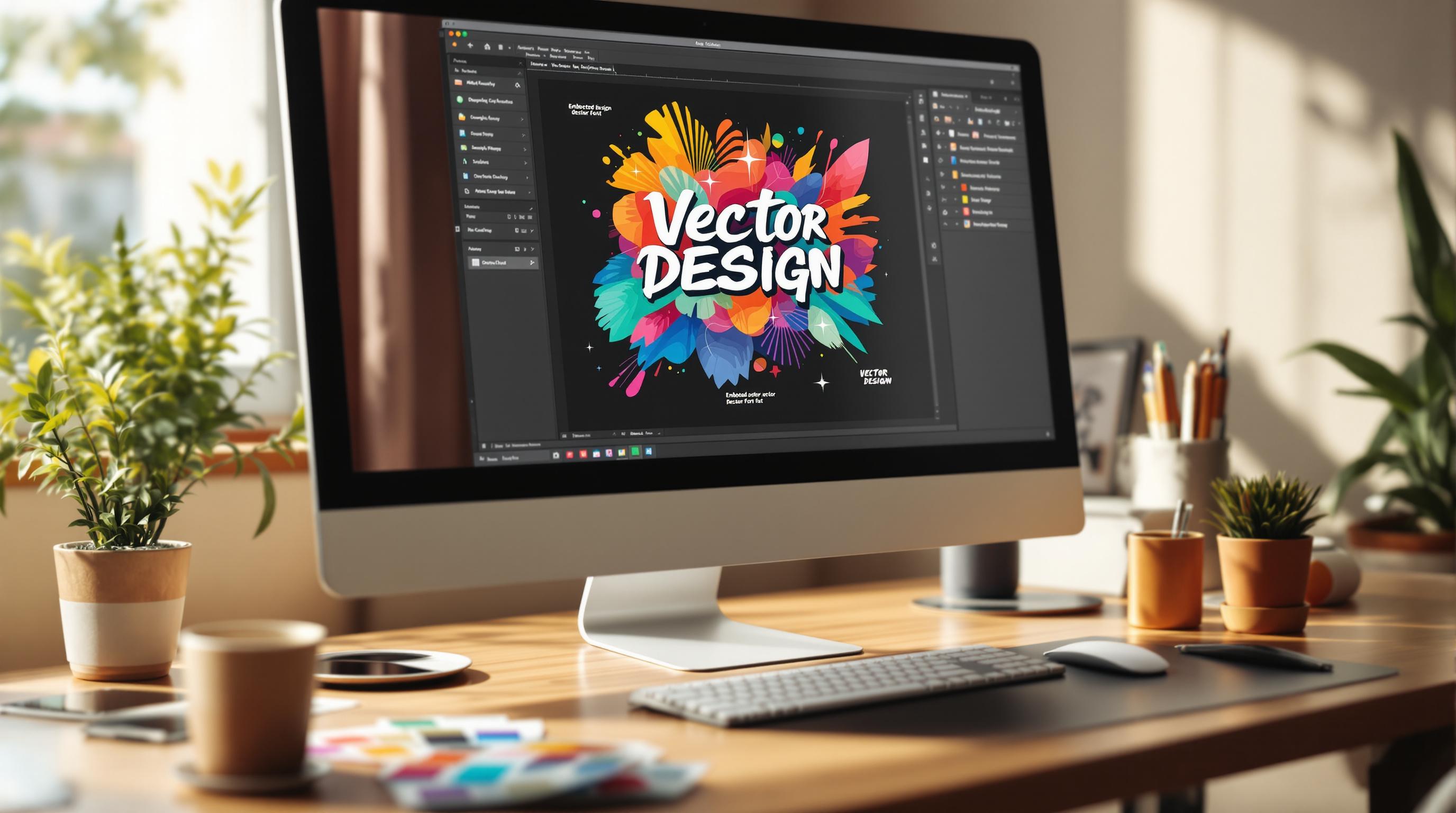

Embedding fonts in vector files ensures your designs look consistent across platforms, printers, and devices. This guide covers why font embedding matters, how to do it for popular file types like SVG, PDF, and AI, and what to do if embedding fails.
Why Embed Fonts?
- Consistency: Prevents font substitutions.
- Portability: Files work without installed fonts.
- Print Accuracy: Ensures correct reproduction.
- Legal Compliance: Adheres to font licenses.
How to Embed Fonts:
- SVG: Save your file with embedded fonts in tools like Adobe Illustrator or Inkscape.
- PDF: Use Adobe Acrobat to embed all fonts and subsets for compatibility.
- AI (Adobe Illustrator): Use the "Package" feature to bundle fonts or convert text to outlines if needed.
Key Tips:
- Ensure fonts are licensed for embedding.
- Test files across platforms to avoid errors.
- Consider converting text to outlines as a last resort (note: text will no longer be editable).
Embedding fonts secures your design's integrity and ensures it displays as intended, whether for web, print, or collaboration.
Before You Start: Font Embedding Setup
Text Layer Management
To keep your text layers organized and streamline your workflow, follow these steps:
- Use descriptive names for layers: Include font details in the name, like "Primary-Helvetica-Regular", to make them easily identifiable.
- Group similar text elements: Arrange text layers by font and style. This makes tracking and updating much simpler.
- Document font details: Keep a record of each font's name, version, license information, and embedding permissions for quick reference.
Font Embedding Steps by File Type
SVG Font Embedding Guide
To embed fonts in SVG files and ensure text remains editable, follow these steps:
- In Adobe Illustrator, go to File > Save As > SVG. In the dialog box, choose the Font > SVG option. For web-safe fonts, use the Subset option to reduce file size while keeping text editable.
- In Inkscape, select File > Save As > Plain SVG and enable Convert text to paths. This ensures consistent text display across platforms. To maintain layout integrity, group text elements before saving.
This method ensures your text displays correctly across various devices and platforms.
PDF Font Embedding Guide
Embedding fonts in PDFs is key to preserving document appearance. To do this in Adobe Acrobat DC:
- Open File > Properties > Fonts to access font embedding settings.
- Adjust export settings as follows:
- Set Compatibility to Acrobat 5 (PDF 1.4) or higher.
- Enable Create Tagged PDF for accessibility.
- Choose Embed All Fonts and ensure subsetting is set to include all fonts.
- Set subsetting to include fonts when percent of characters used is below: 100%.
These steps ensure your PDF maintains its design while keeping file sizes manageable. You can verify font embedding in Acrobat's Font panel.
Adobe Illustrator Font Embedding Guide

For embedding fonts in Adobe Illustrator files, follow these steps:
- Save your file by selecting File > Save As and enabling Create PDF Compatible File.
- To review fonts used, go to Type > Find Font.
- Use the Package feature from the flyout menu to collect all fonts and linked assets into one folder. This is especially helpful when sharing files with others.
- Enable Font Subsetting during saving to reduce file size while keeping text editable.
For collaborative projects, the Package feature ensures all necessary assets are included, avoiding missing font issues. If your design includes multiple text layers, consider creating two versions: one with live text for editing and another with outlined text for final use. This approach provides flexibility and ensures your design looks consistent across different systems.
sbb-itb-384f04f
What to Do When Embedding Fails
If your usual embedding methods don't work, consider these alternatives. For example, if font embedding fails because of technical issues or licensing restrictions, you can convert the text to outlines. This process turns the text into vector shapes, eliminating the need for the original font file. Keep in mind: Once converted, the text is no longer editable as font data.
AI Tools for Font and Design Work
AI tools simplify tasks like font embedding and vector conversion, ensuring professional-quality results without the hassle of manual processes.
Logo Diffusion: Vector Design Tools

Logo Diffusion makes it easy to export vectors and embed fonts seamlessly. Its vectorizer tool turns designs into clean .SVG files, keeping font details intact and ready for use.
Key Features for Font Management:
| Feature | Description |
|---|---|
| Direct SVG Export | Keeps font data intact during conversion. |
| Sketch-to-Vector | Converts text into precise vector paths. |
| Vector Upscaling | Ensures text clarity, no matter the size. |
| Background Removal | Simplifies handling of text elements. |
These features streamline the design process while maintaining high-quality standards.
AI Design Process Enhancements
Logo Diffusion takes automation further with its vector export system, making font conversion effortless. The Pro plan offers 100 vector exports per month, perfect for managing multiple projects efficiently.
"Exports your creations as vectors, or convert any image into a clean vector .SVG file, ready to be used online or with any vector image editing software." - Logo Diffusion
For larger-scale projects, the Elite plan ($99/month) provides 200 vector exports and advanced font management tools, making it ideal for professionals with demanding design needs.
These AI-driven tools integrate seamlessly with the earlier font embedding steps, offering a smooth workflow for designers.
Quick Reference Guide
For a quick overview, refer to this guide to confirm the key steps for font embedding. For more details, check the comprehensive guides provided earlier.
Font Embedding Steps Checklist
- Verify font licenses: Ensure the fonts you're using are properly licensed.
- Organize text layers: Group elements and save editable backups for easy adjustments.
- Choose an embedding method: Weigh the pros and cons of embedding fonts versus converting text to outlines.
- Check compatibility: Confirm the embedded fonts display correctly and resolve any errors.
Tips for Smooth Font Embedding
Use the checklist above alongside these tips to avoid mistakes and maintain consistency.
- Before Embedding: Decide whether embedding fonts or converting text to outlines is better for your project. Test the chosen method across different platforms.
- Technical Details: Keep an eye out for compatibility issues on various devices and document font information for future use.
- Avoid These Mistakes: Don't use unlicensed fonts, neglect text layer management, or skip compatibility testing.
This approach ensures a smoother process and reduces the chances of errors.
Elevate Your Brand with the Ultimate AI Logo Maker




































.png)




